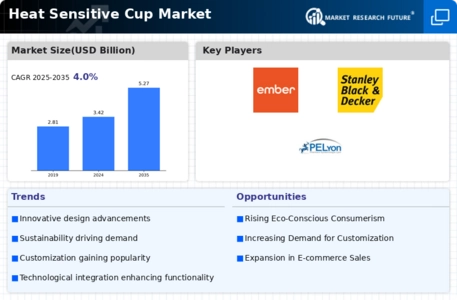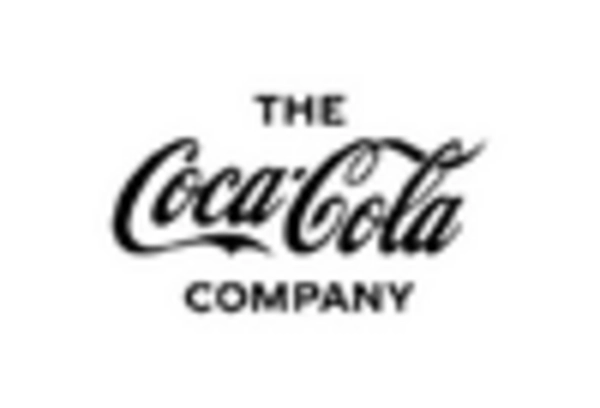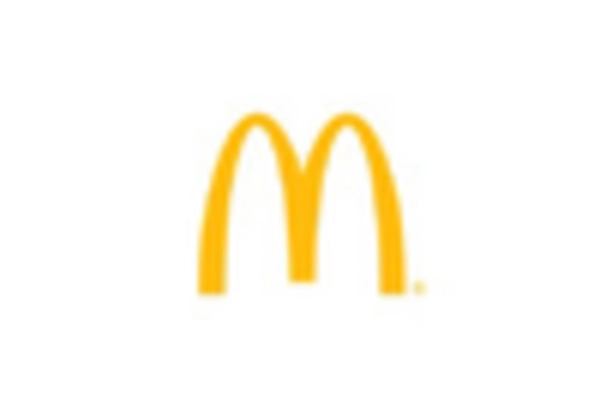Growing Health Consciousness
In recent years, there has been a marked increase in health consciousness among consumers, which significantly impacts the Heat Sensitive Cup Market. As individuals become more aware of the importance of hydration and the effects of temperature on beverages, the demand for heat-sensitive cups that indicate drink temperature is likely to rise. This trend is particularly evident among younger demographics who prioritize health and wellness. Market data suggests that the health and wellness sector is expected to expand by 8% annually, which could translate into increased sales for heat-sensitive products that promote safe drinking practices.
Influence of Lifestyle Changes
Lifestyle changes, particularly among millennials and Generation Z, are significantly influencing the Heat Sensitive Cup Market. As these demographics prioritize convenience and personalization, the demand for heat-sensitive cups that cater to their unique preferences is likely to increase. The trend towards on-the-go consumption, coupled with a desire for products that reflect individual style, suggests a promising future for heat-sensitive designs. Market analysis indicates that lifestyle-oriented products are projected to grow by 7% annually, indicating a robust opportunity for innovation within the Heat Sensitive Cup Market.
Expansion of E-commerce Platforms
The Heat Sensitive Cup Market is benefiting from the rapid expansion of e-commerce platforms. As online shopping becomes increasingly prevalent, consumers are more inclined to purchase unique and innovative products, such as heat-sensitive cups, from the comfort of their homes. E-commerce sales in the home goods sector have surged, with a reported increase of 15% in online sales over the past year. This shift not only broadens the market reach for manufacturers but also allows for targeted marketing strategies that can effectively engage potential customers. Consequently, the Heat Sensitive Cup Market is poised for growth as e-commerce continues to thrive.
Technological Advancements in Materials
The Heat Sensitive Cup Market is experiencing a notable shift due to advancements in materials technology. Innovations in thermochromic materials allow cups to change color based on temperature, enhancing user experience. This trend is supported by a growing consumer preference for interactive and visually appealing products. According to recent data, the market for thermochromic materials is projected to grow at a compound annual growth rate of 5.2% over the next five years. As manufacturers adopt these technologies, the Heat Sensitive Cup Market is likely to see increased competition and product differentiation, driving sales and attracting a broader customer base.
Rising Interest in Eco-friendly Products
The Heat Sensitive Cup Market is witnessing a surge in demand for eco-friendly products. As environmental concerns become more pronounced, consumers are increasingly seeking sustainable alternatives to traditional plastic and disposable cups. This shift is reflected in the growing popularity of reusable heat-sensitive cups made from biodegradable materials. Market Research Future indicates that the eco-friendly product segment is expected to grow by 10% annually, driven by consumer preferences for sustainable options. Manufacturers who prioritize sustainability in their product offerings are likely to gain a competitive edge in the Heat Sensitive Cup Market.


















Leave a Comment